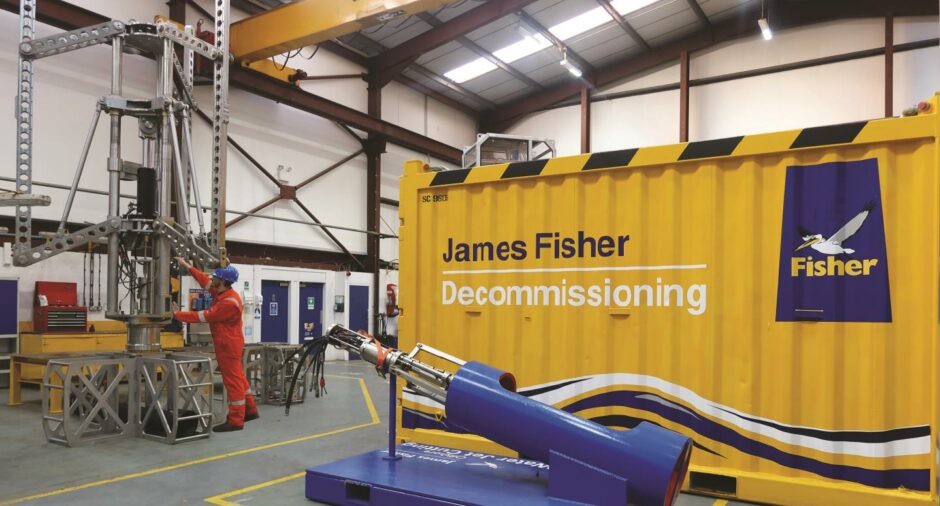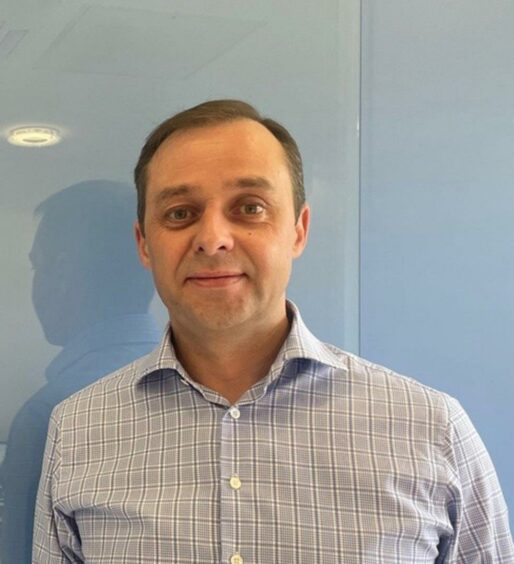
The energy sector has witnessed its fair share of change in recent times. Organisations are redefining themselves to better reflect their roles and objectives today and for the future. Statoil’s 2018 transformation to Equinor, Total’s 2021 shift to TotalEnergies, and Shell moving its long-term focus from oil and gas to renewables being examples of this. Rebranding and repositioning are positive, proactive responses to the changing world.
We’re in good company in making big changes. It is with great excitement and pride that I can announce the creation of James Fisher Decommissioning as a business stream within JFO. For our business this is both an organic and strategic development, aligning with our vision, values, and the trajectory of our growth.
James Fisher Decommissioning is ideally placed to deliver on the demands of global decommissioning and the energy transition through the continuous development of our capabilities. This will allow us to better deliver greener and more effective solutions for our clients and the communities in which we work. We are undertaking these changes in our business from an informed, experienced, and resilient position and with the support and global footprint of a strong and forward-thinking parent company in James Fisher plc.
Whether or not decommissioning will be expedited or delayed because of the impact and uncertainty of Covid can be debated. However, everything from the scale of work necessary to engage the climate crisis and drive for net zero, supply chain availability, technological developments, regulatory pressure and the burden of responsibility on operators and governments – and not forgetting our own order books – point towards the dynamic necessity of decommissioning and huge opportunities.
Numbers are big! From the 7500 offshore platforms identified globally by MarketsAndMarkets (July 2021) to an estimate just shy of 3000 identified by IHS Markit’s database Petrodata™ FieldsBase (FieldFisher, October 2021), the scope and scale of opportunities are vast. This becomes even clearer when it is also estimated that more than 18,500 wellheads, 2,850 subsea trees, and 83,000km offshore pipelines and umbilical’s currently in operation are to be decommissioned by 2030. (FieldFisher, October 2021).
Spend forecasts are equally big. IHS Markit has estimated a global spend of US$100 billion by 2030 and Wood Mackenzie suggest that this US$100 billion figure could be attributed to the Asia-Pacific region alone over the same period. Suffice to say, there is a lot of work to be done.
Decommissioning is a space we’ve grown into, supporting our clients globally across the lifecycle of their offshore projects for nearly two decades. We’ve been clear and open about our vision to become the go-to decommissioning partner to our clients – specialising in the removal of subsea infrastructure, structural removal, well severance and well abandonment.
We’re already delivering cost reductions through two key areas identified by the OGA – improved cost estimating and reduced subsea P&A costs. But there are additional areas for cost reduction identified by IHS Markit, including subsea removal, cutting and dismantling.
We’ve worked hard to build, develop and complement our team through investment, upskilling, acquisition, recruitment and collaboration. In 2020 as the pandemic struck, the momentum behind our decommissioning vision gathered pace.
We absorbed the subsea excavation tooling capabilities of our sister company James Fisher Subsea Excavation in early 2020. Later that year we reached an innovation milestone, successfully testing our collaboratively developed combined internal cut and lift tool with our project partner First Subsea and with the support of Shell and the Net Zero Technology Centre (NZTC).
In 2021, we introduced you to our Decommissioning Director Mark Stephen as well as the team behind SEABASS, a vessel based subsea abandonment tool, who we welcomed upon acquisition of subsea project and engineering consultancy Subsea Engenuity.
Throughout, we’ve also continued to deliver innovative industry firsts for our clients, saving them time, money and reducing the carbon footprints of
their projects.
It is the collective hard work, agility and commitment of our team that has allowed us to realise this landmark stage in our corporate history. The exceptional working culture we’ve created and the life of field capabilities; EPCI, SURF, IRM, CFE on which JFO was established remain key strings to our bow.
We’re reinventing the service delivery model for subsea infrastructure recovery, leveraging our decades-long engineering and technology expertise to deliver value to our customers. We invite you to join us on this journey.
Recommended for you

 © Supplied by James Fisher Offshor
© Supplied by James Fisher Offshor